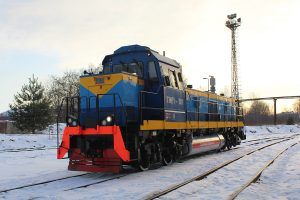 The Russian certification authority, “Register of Certification on the Federal Railway Transport” (RS FzhT), issued the Certificate of Conformity for the TEMG1 shunting locomotive with two power plants running on liquefied natural gas (LNG).
The Russian certification authority, “Register of Certification on the Federal Railway Transport” (RS FzhT), issued the Certificate of Conformity for the TEMG1 shunting locomotive with two power plants running on liquefied natural gas (LNG).
The locomotive, which is manufactured by Sinara Transport Machines has successfully passed all the necessary certification tests for compliance with the requirements of CU TR 001/2011, the Customs union technical regulations.
The pilot test will take place in February on the Orenburg rail branch of Gazpromtrans and is being carried out according to the company’s plan to expand its fleet of LNG-powered locomotives.
“We have all the necessary competencies for the development of railway transport operating on alternative energy sources. The use of liquefied natural gas is very promising in railway transport due to its environmental friendliness and efficiency,” Victor Lesh, the CEO of STM said.
The technical design specifications for this unique locomotive were developed in cooperation with the experts of Gazpromtrans while the Ministry of Industry and Trade of the Russian Federation widely supported the development of the project on every stage.
The design of the TEMG1 shunting locomotive includes advanced technical solutions such as a modular structure, microprocessor-based engine control system, as well as asynchronous drive for all auxiliary machines. The TEMG1 was manufactured at the facilities of the Lyudinovo Diesel Locomotive Plant (LTZ, the STM daughter company).
The 4-axle class TEMG1 gas-powered shunting locomotive runs on LNG, which can help to achieve CO2 emissions reduction up to 40% as compared to a traditional diesel locomotive. The capacity of the gas-engine locomotive is 1,120 hp. The LNG’s reserve in the cryogenic tank is equal to 2600 kg and allows to ensure an unequipped mileage of up to 5 days.
Sinara Transport Machines estimates that the market will be more and more interested in these locomotives especially in Russia where a gas-filling infrastructure is being created on the existing Russian railways network.
Share on:



